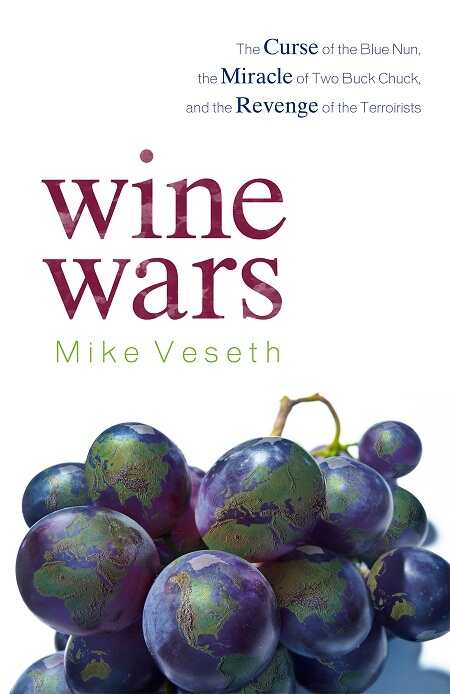Wine Wars
The Curse of the Blue Nun, the Miracle of Two Buck Chuck, and the Revenge of the Terroirists
- 2011 INDIES Winner
- Silver, Business & Economics (Adult Nonfiction)
Globalization and international trade have never been so prevalent, and those conditions have led to unprecedented access to wine. Even small producers can tap into the larger market, enabling them to ship bottles worldwide. But with open markets come challenges too, as producers struggle with increased competition, falling prices, and an uncertain future.
Veseth expertly presents the economic forces that are shaping wine consumption, and he frets about the beverage’s future, particularly with the pushback seen by “terroirists”—people who are obsessive about a wine’s “terroir,” that its identity reflect its unique growing conditions and place. The battle for wine’s future isn’t only about money, he posits, but also about power struggles between vintners, retailers, and governments.
In addition to penning the blog WineEconomist.com, Veseth is a professor of international political economy at the University of Puget Sound. His passion for wine combined with his political insight blend artfully, allowing him to see the industry from a select position. Such a global view is necessary to explore the numerous aspects of wine and its distinctive role as a worldwide beverage.
On one side of the equation concerning wine’s pricing, for example, is the fact that it is one of the few mainstream products valued by consumers solely for its price. Veseth writes, “Insecure wine buyers often read price as a proxy for quality. They are afraid to pay too little for a bottle of wine because they are worried it will be horrible.” As a result, selling cheap wine is trickier than most people might think.
But on the other side, Trader Joe’s wildly popular Two-Buck Chuck challenged that prejudice and changed the usual market dynamic, leading to demand for lower-priced wine even at the risk of wiping out smaller producers.
Added to these forces, the “terroirists” seek to preserve and protect an idea of wine that’s more natural, more connected to the earth, and more deeply embedded in culture, according to Veseth. As if all that wrangling weren’t enough, producers now have to confront global climate change that could alter the map when it comes to growing regions.
In his artful and sometimes amusing analysis of the “wars” taking place within the wine world as a result of all these skirmishes, Veseth untangles a complicated issue and provides a cogent summary of an industry’s challenges. For anyone who appreciates a good glass of wine—or who’s been disappointed by a bad one, despite a high sticker price—Veseth’s insights will prove tantalizing.
Reviewed by
Elizabeth Millard
Disclosure: This article is not an endorsement, but a review. The publisher of this book provided free copies of the book to have their book reviewed by a professional reviewer. No fee was paid by the publisher for this review. Foreword Reviews only recommends books that we love. Foreword Magazine, Inc. is disclosing this in accordance with the Federal Trade Commission’s 16 CFR, Part 255.

